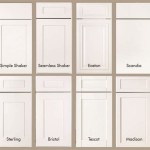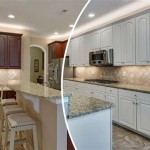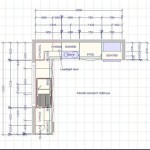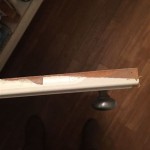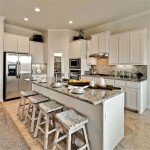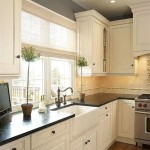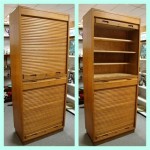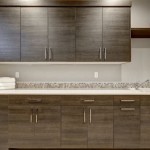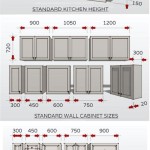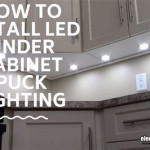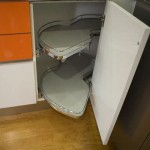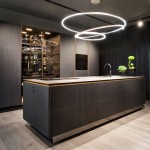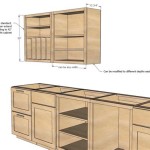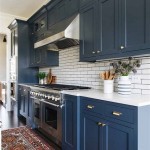Kitchen Cabinets With Lights On Top: Illuminating Your Culinary Space
Kitchen cabinets serve as essential storage solutions and integral design elements within a home's culinary center. Enhancing these functional structures with lighting, specifically lights installed on top of the cabinets, introduces both practical and aesthetic benefits. This article delves into the various considerations surrounding kitchen cabinets with lights on top, exploring the types of lighting available, the advantages they offer, and the crucial factors to consider during the planning and installation process.
Types of Lighting for Above Kitchen Cabinets
Selecting the appropriate type of lighting is fundamental to achieving the desired effect above kitchen cabinets. Several options exist, each offering unique characteristics in terms of aesthetics, energy efficiency, and light quality. Understanding these distinctions allows for informed decisions tailored to individual preferences and kitchen design.
LED Strip Lights: Light Emitting Diode (LED) strip lights are a popular choice due to their versatility and energy efficiency. These flexible strips can be easily cut to the desired length and adhered to the top of the cabinets, providing a continuous and even distribution of light. LEDs consume significantly less energy than traditional incandescent or halogen bulbs, contributing to cost savings over time. They are available in a wide range of color temperatures, from warm white to cool white, allowing homeowners to customize the ambiance of their kitchen. Furthermore, LED strip lights often feature dimming capabilities, offering greater control over the light intensity. Certain models are also equipped with color-changing functionality, enabling dynamic lighting effects.
Puck Lights: Puck lights are small, circular fixtures that can be surface-mounted or recessed into the top of the cabinets. They typically utilize LED technology, offering similar energy efficiency and longevity benefits as LED strip lights. Puck lights are particularly well-suited for highlighting specific areas or accentuating decorative items displayed on top of the cabinets. They provide a focused beam of light, creating a dramatic effect. The compact size of puck lights makes them discreet and easily concealable, minimizing their visual impact when not in use.
Rope Lights: Rope lights consist of small incandescent, halogen, or LED bulbs encased in a flexible plastic tube. While less energy-efficient than LED strip lights, rope lights offer a unique aesthetic appeal. The diffused light emitted from the rope creates a soft and ambient glow. Rope lights are relatively inexpensive and easy to install, making them a budget-friendly option for adding decorative lighting above kitchen cabinets. However, their shorter lifespan and higher energy consumption should be considered before making a final decision.
Individual Spotlights: Adjustable spotlights offer a targeted solution for illuminating specific areas above cabinets. These versatile fixtures can be angled to highlight artwork, architectural details, or decorative objects. Spotlights typically use halogen or LED bulbs and can be surface-mounted or track-mounted. The ability to adjust the direction and intensity of the light provides maximum flexibility in creating a customized lighting scheme. Spotlights are an excellent choice for kitchens with high ceilings or those seeking to create a focal point.
Benefits of Lighting Above Kitchen Cabinets
Integrating lighting above kitchen cabinets yields several advantages beyond mere illumination. These benefits encompass both functional improvements and aesthetic enhancements, contributing to a more enjoyable and visually appealing kitchen environment.
Ambient Lighting Enhancement: Lights on top of kitchen cabinets contribute significantly to the overall ambient lighting in the kitchen. The upward-directed light bounces off the ceiling, creating a soft, diffused glow that reduces harsh shadows and provides a more even illumination throughout the space. This indirect lighting is particularly beneficial in kitchens with limited natural light, as it helps to brighten the room and create a more welcoming atmosphere. The additional ambient light can also reduce the need for overhead lighting during certain times of the day, further conserving energy.
Aesthetic Appeal and Visual Height: Installing lights above kitchen cabinets can dramatically enhance the aesthetic appeal of the kitchen. The upward-directed light draws the eye upwards, creating a sense of vertical space and making the room feel larger and more open. This is particularly effective in kitchens with lower ceilings. Furthermore, the lighting can accentuate architectural details, molding, and decorative items displayed on top of the cabinets, adding visual interest and character to the space. The soft glow emanating from above the cabinets creates a warm and inviting ambiance, transforming the kitchen into a more comfortable and enjoyable space.
Highlighting Decorative Items and Creating Focal Points: The space above kitchen cabinets often serves as a display area for decorative items, such as vases, artwork, or collectibles. Lights strategically placed above the cabinets can highlight these items, transforming them into focal points within the kitchen. By illuminating these objects, the lighting draws attention to them and adds visual interest to the space. This is particularly effective for creating a personalized and inviting atmosphere in the kitchen.
Night Lighting and Safety: Lights on top of kitchen cabinets can serve as a subtle source of night lighting, providing a gentle glow that helps navigate the kitchen in the dark. This is particularly useful for late-night trips to the refrigerator or for those who prefer to avoid turning on bright overhead lights during the evening hours. The soft illumination can also enhance safety by reducing the risk of trips and falls.
Factors to Consider During Planning and Installation
Successful installation of lights above kitchen cabinets requires careful planning and attention to detail. Several factors should be considered to ensure optimal performance, safety, and aesthetic integration.
Power Source and Wiring: Determining the power source and wiring requirements is a crucial initial step. Ideally, a dedicated electrical circuit should be installed to accommodate the new lighting. This will prevent overloading existing circuits and ensure a safe and reliable power supply. If a dedicated circuit is not feasible, it is essential to carefully assess the existing electrical load and ensure that the addition of the new lighting will not exceed the capacity of the circuit. Wiring should be concealed within the cabinets or walls to maintain a clean and professional appearance. If unfamiliar with electrical work, professional assistance should be sought to ensure compliance with local building codes and safety regulations.
Cabinet Height and Spacing: The height and spacing of the cabinets will influence the selection and placement of the lighting fixtures. Taller cabinets may require more powerful lights or a greater number of fixtures to achieve the desired level of illumination. The spacing between the cabinets and the ceiling will also impact the light distribution and overall aesthetic. Consider the angle of the light and how it will interact with the ceiling and surrounding surfaces. Experiment with different fixture placements before permanently installing the lights to ensure optimal results.
Light Color Temperature and Brightness: The color temperature and brightness of the lights significantly impact the ambiance of the kitchen. Warm white light (2700-3000K) creates a cozy and inviting atmosphere, while cool white light (4000-5000K) provides a brighter and more energizing effect. The choice of color temperature should complement the overall design style of the kitchen and the personal preferences of the homeowner. Similarly, the brightness of the lights should be appropriate for the size of the kitchen and the desired level of illumination. Dimmable lights offer the flexibility to adjust the brightness as needed.
Fixture Style and Finish: The style and finish of the lighting fixtures should complement the existing cabinetry and hardware. Choose fixtures that blend seamlessly with the overall design aesthetic of the kitchen. Consider the materials used in the cabinets, countertops, and backsplash when selecting the finish of the lights. Chrome, brushed nickel, and oil-rubbed bronze are popular choices that coordinate well with a variety of kitchen styles. Avoid selecting fixtures that clash with the existing design elements or draw undue attention to themselves.
Ease of Installation and Maintenance: The ease of installation and maintenance should also be considered when selecting lighting fixtures. Opt for fixtures that are easy to install and access for future maintenance or repairs. LED lights typically have a longer lifespan than traditional incandescent or halogen bulbs, reducing the frequency of bulb replacements. Choose fixtures with easily replaceable bulbs or components. Consider the accessibility of the wiring and power source when planning the installation to ensure that future maintenance can be performed without difficulty. Regularly clean the fixtures to maintain their brightness and aesthetic appeal.
By carefully considering these factors, homeowners can effectively integrate lighting above kitchen cabinets, enhancing the functionality, aesthetics, and overall ambiance of their culinary space. The addition of well-planned lighting not only improves the visual appeal of the kitchen but also creates a more welcoming and enjoyable environment for cooking, entertaining, and everyday living.

Above Cabinet Led Lighting Using Modules Diy Projects

Kitchen Under Cabinet Professional Lighting Kit Warm White Led Strip Tape Light

Upper Cabinet Lights Decorating Above Kitchen Cabinets Decor Top

Under Cabinet Kitchen Lighting Pictures Ideas From

Inside Glass Cabinet Lighting How To Installing

Ways To Light Your Kitchen With Leds Ksi Cuisine Solutions

How To Choose And Install Led Strip Lights For Kitchen Cabinets

How To Install Kitchen Cabinet Lighting The Honeycomb Home

Light Up Your Cabinets With Rope Lights

40 Kitchen Lighting Ideas To Brighten Your Space


